US Election 2016: One in 25 Americans are about to be handed immense power
Voters in just four small American states - representing just one 25th of the country's population - will determine who can challenge for the White House
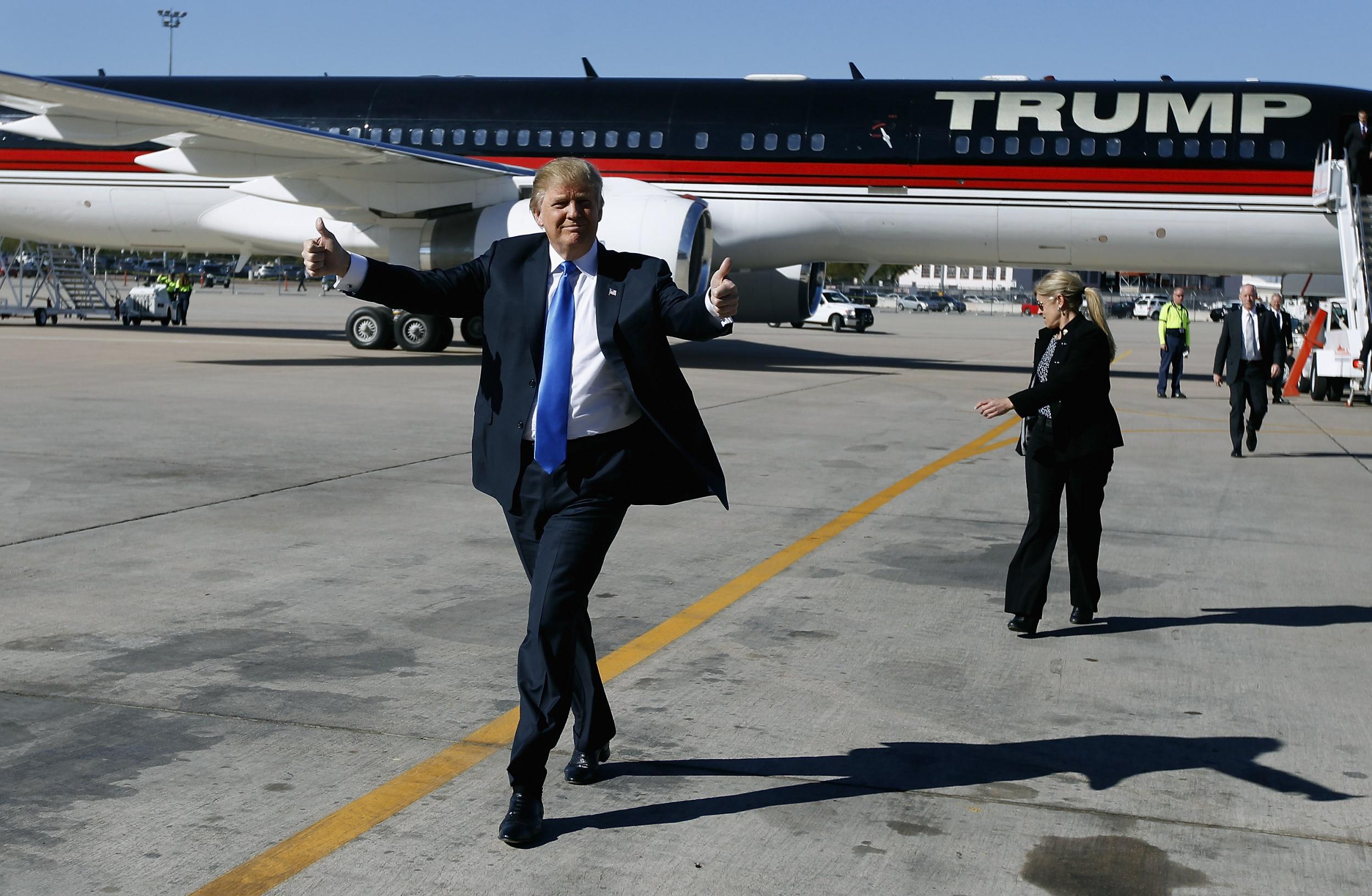
On Monday, the Iowa caucuses will kick off the 2016 US Presidential election race.
After months of speculation, debate, and poll-watching, we will discover whether Donald Trump really has as much support as surveys suggest, and whether Bernie Sanders can actually challenge Hillary Clinton as the Democrats' candidate.
Once again, the people of Iowa - along with those in New Hampshire, South Carolina and Nevada - will wield the considerable power they have to shape the contest to become the leader of arguably the world's most powerful country.
Over the next month these four states, and only these four states, will choose between each party’s candidates, while everyone else in the country can only watch.
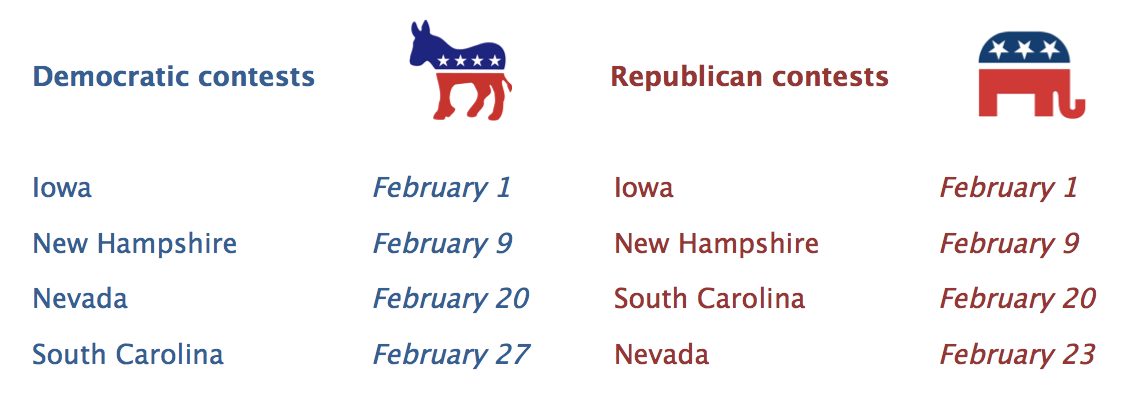
A poor showing in these early votes by flailing candidates, such as Jeb Bush and Carly Fiorina, may force them to drop out.
Together these four states make up just 1-in-25 Americans, giving a tiny fraction of the country's population the power to eliminate certain candidates and build momentum behind others.
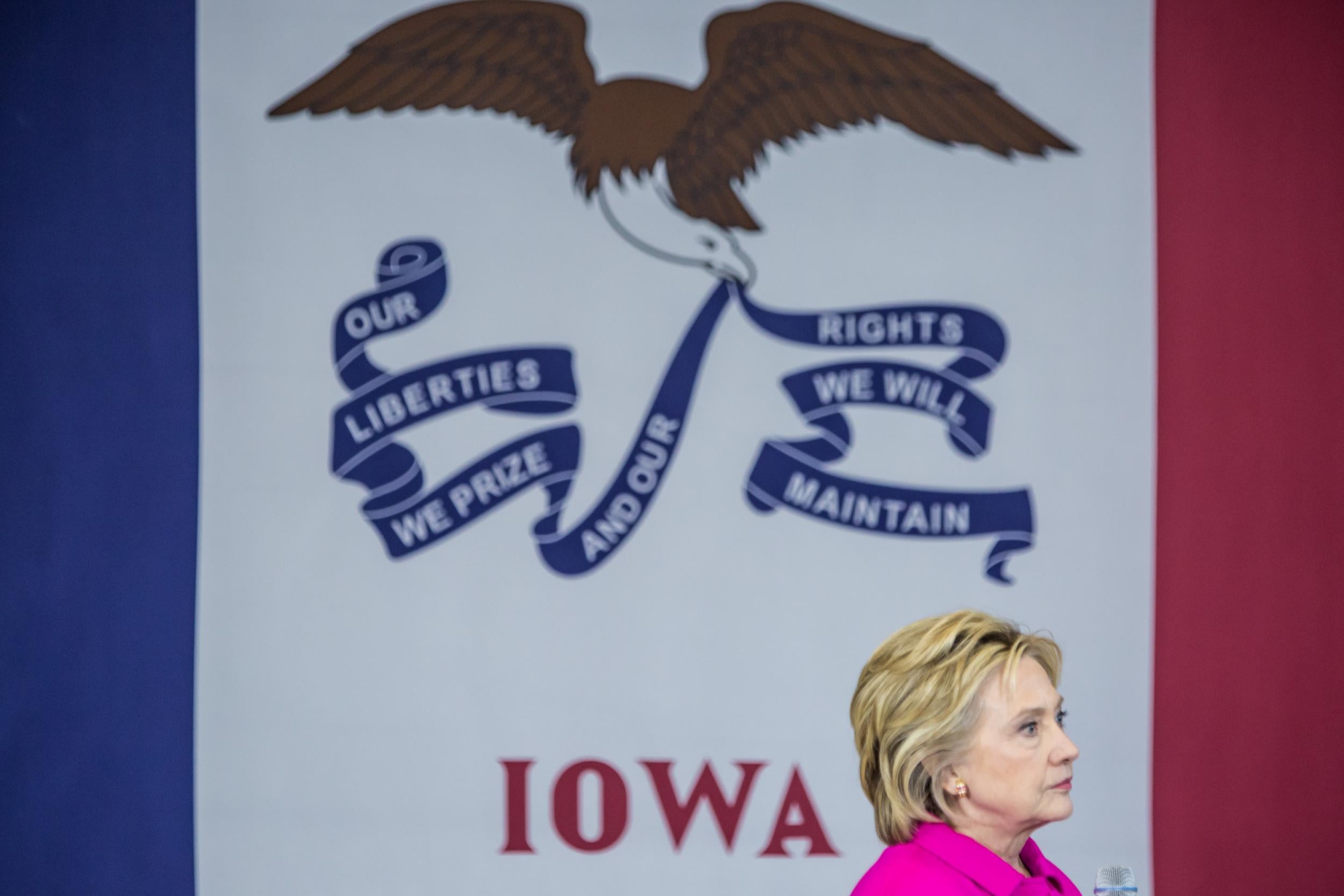
To become the nominee, would-be presidents need win delegates in contests across each US state.
While these first four states don’t in themselves offer many delegates, the candidate who does best in them is likely to fare well when many more states vote on ‘Super Tuesday’, on March 1.
Between a fifth and a quarter of delegates will be decided on ‘Super Tuesday’.

That makes the first four states critical. But who are the 1-in-25 Americans who live there?
They come from four states that have been carefully selected, as this map shows.
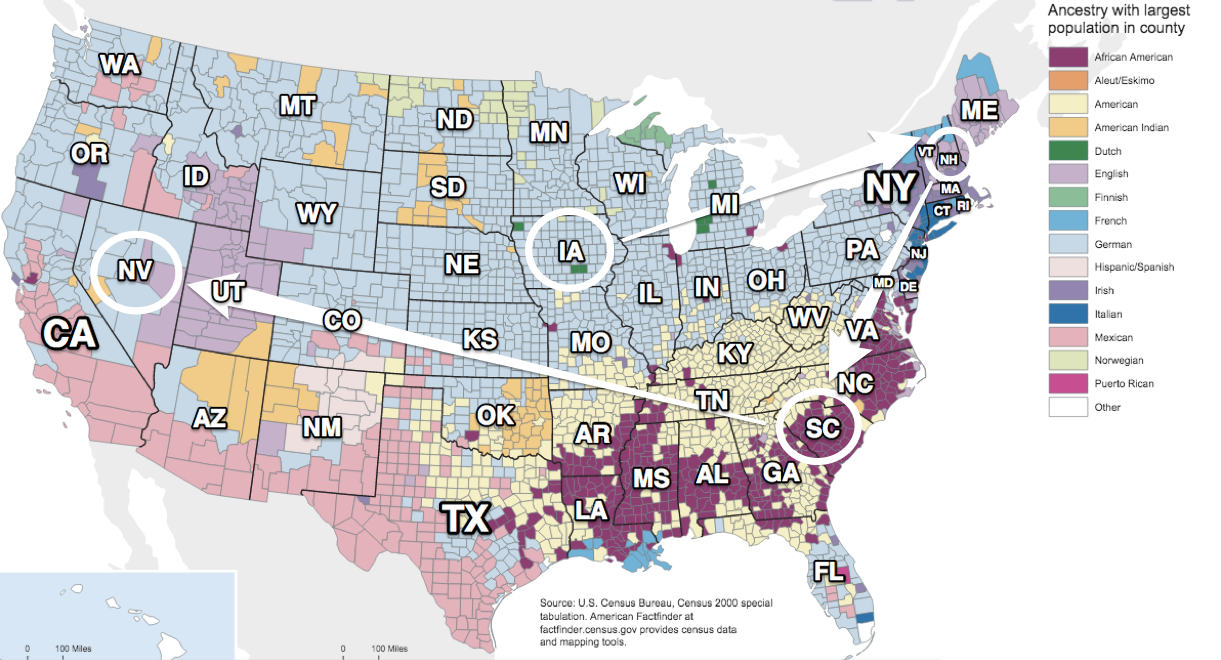
This map reflects the ancestry of the largest group of people in each US county. The data comes from the 2000 US Census, as equivalent details were not collected in the 2010 Census.
German ancestry, represented by the light blue tiles, dominates the Mid-West and Americans of Mexican ancestry are in light pink along the southern border.
The Deep South is split between African-Americans in purple and whites who identify as 'American' in yellow, while Irish and Italian communities are coloured in shades of blue in the North East.
The four early voting states are circled.
Each state has been selected so they will collectively represent these different groups.
Iowa
Iowa is a prototypical state of German ancestry in the Mid-West, the region which stretches from the Dakotas in the west to Ohio in the east.
Around 90-95 per cent of the state is white, with one-in-three of them descending from Germans. US counties with predominantly German ancestry are coloured light blue in the map above.
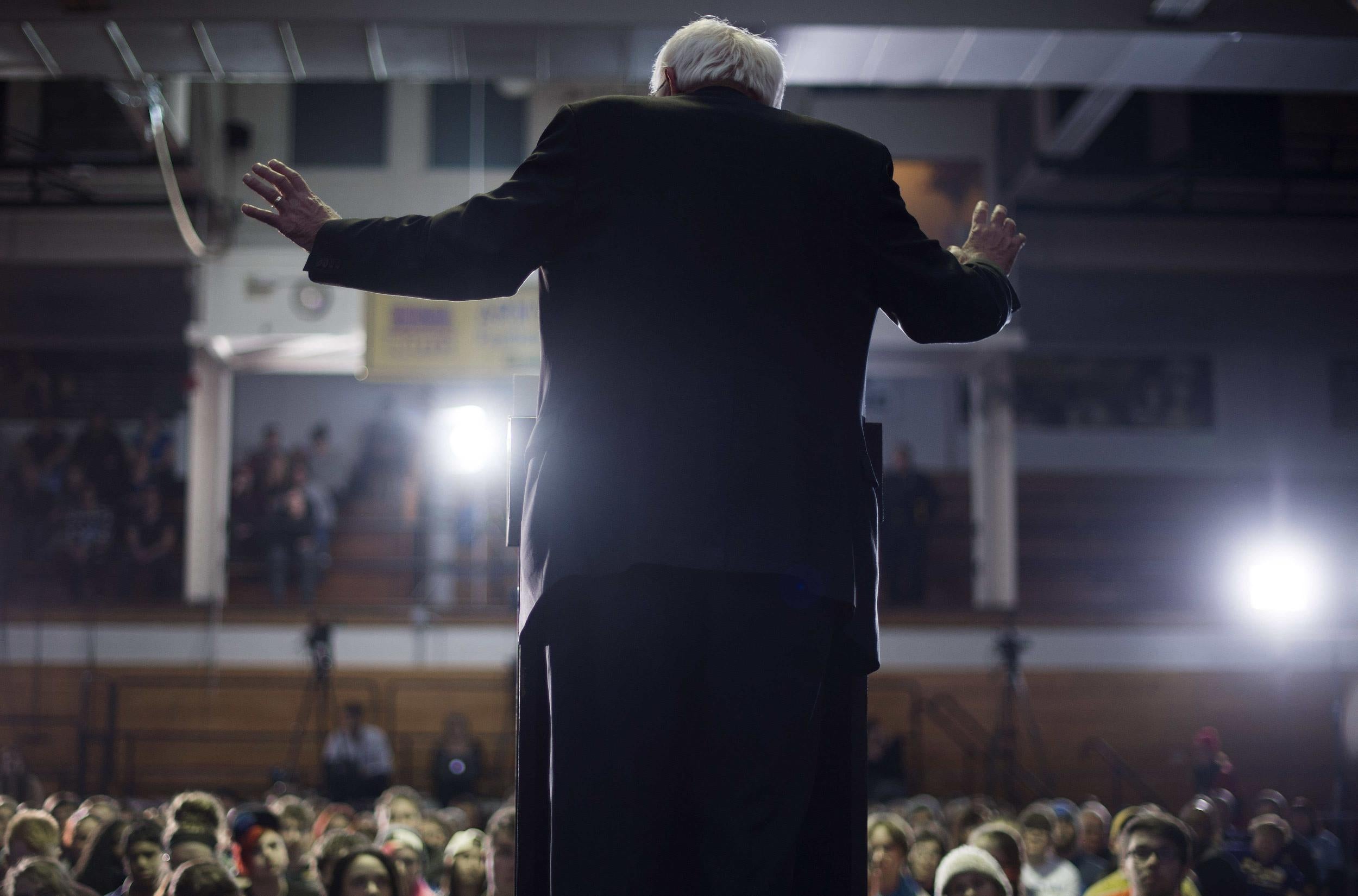
While Iowa looks small on the map, it is actually slightly bigger than England in geographical size, but has 1/20th of the population.
That makes it about average for the US in both size and population.
Sometimes described as ‘America’s Heartland’, it is at the centre of the ‘Corn Belt’.
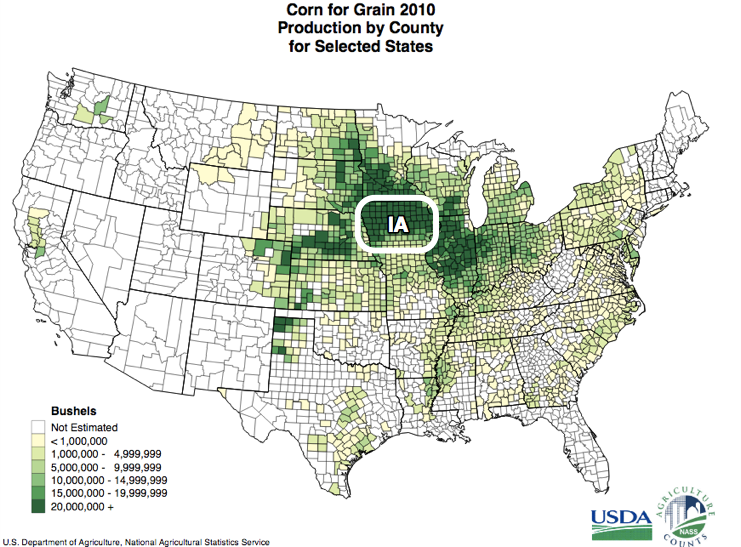
While no longer as rural or agricultural as it long was, Iowa is still a major producer of America’s eggs, soybeans, hogs - and corn.
It is a critical ‘swing state’ in presidential elections. While it only has six electoral votes in November (out of 538), they could prove pivotal in a close race this year.
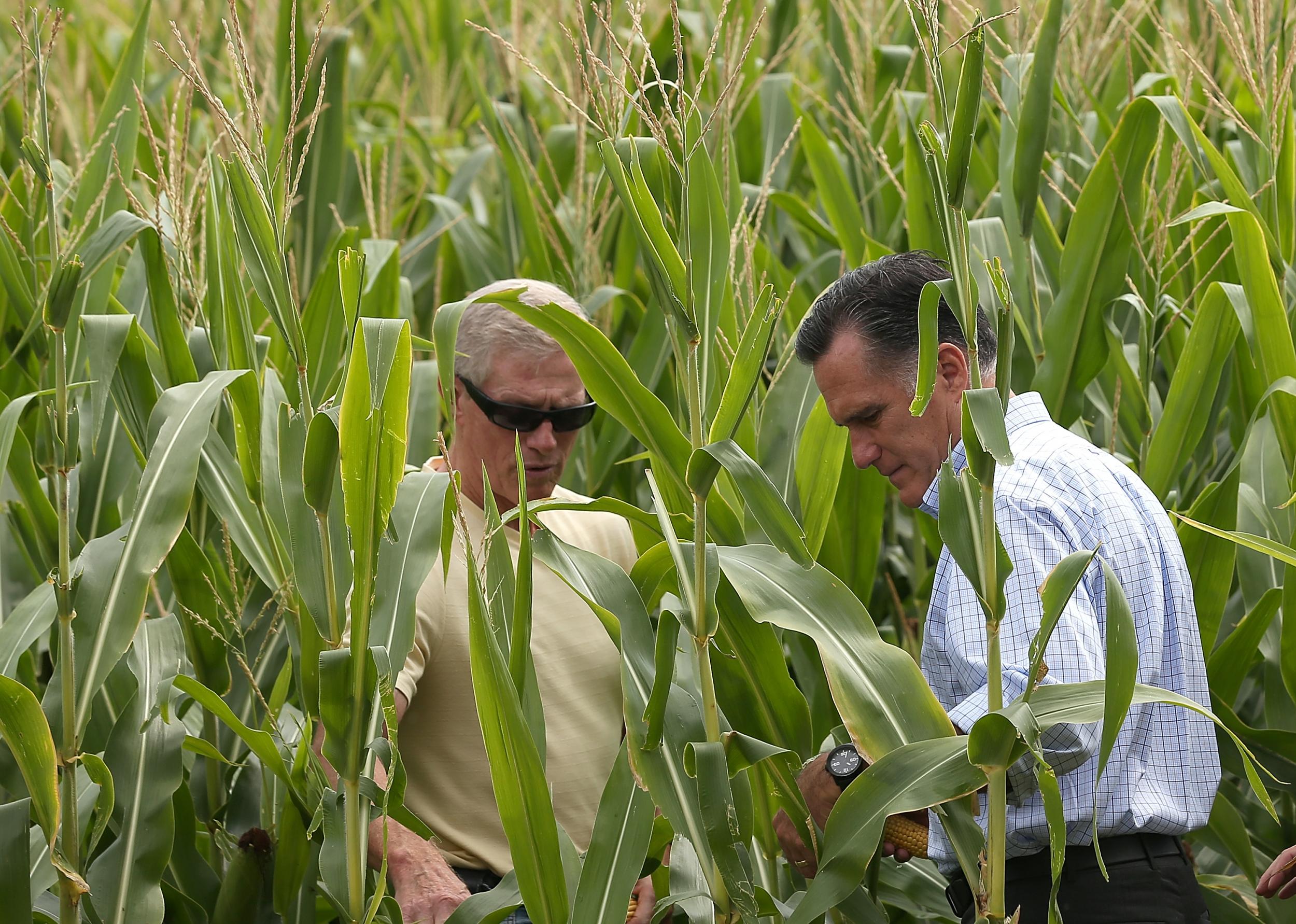
Barack Obama won the state convincingly in 2008 and 2012, after George Bush and Al Gore won it by less than one per cent in 2004 and 2000 respectively.
Donald Trump and Ted Cruz currently lead the Republican polls there, while establishment favourite Marco Rubio is aiming for third.
Hillary Clinton’s candidacy stumbled in 2008 when she could only manage third place there. This time she must beat Bernie Sanders to end his campaign quickly.
Polls suggest the race between them is too close to call.
But US polls are even less reliable than those in the UK have shown themselves to be. US pollsters only ask a few hundred voters in each survey, which means their results have a large margin of error.

New Hampshire
After Iowa votes next Monday, the race will move to New Hampshire, which votes for both parties the following Tuesday, 9 February.
Ms Clinton resuscitated her campaign here in 2008 after losing Iowa. If she also wins Iowa, Hillary Clinton could end Mr Sanders’ campaign by winning here.
New Hampshire has traditionally been a contest where establishment candidates do well.
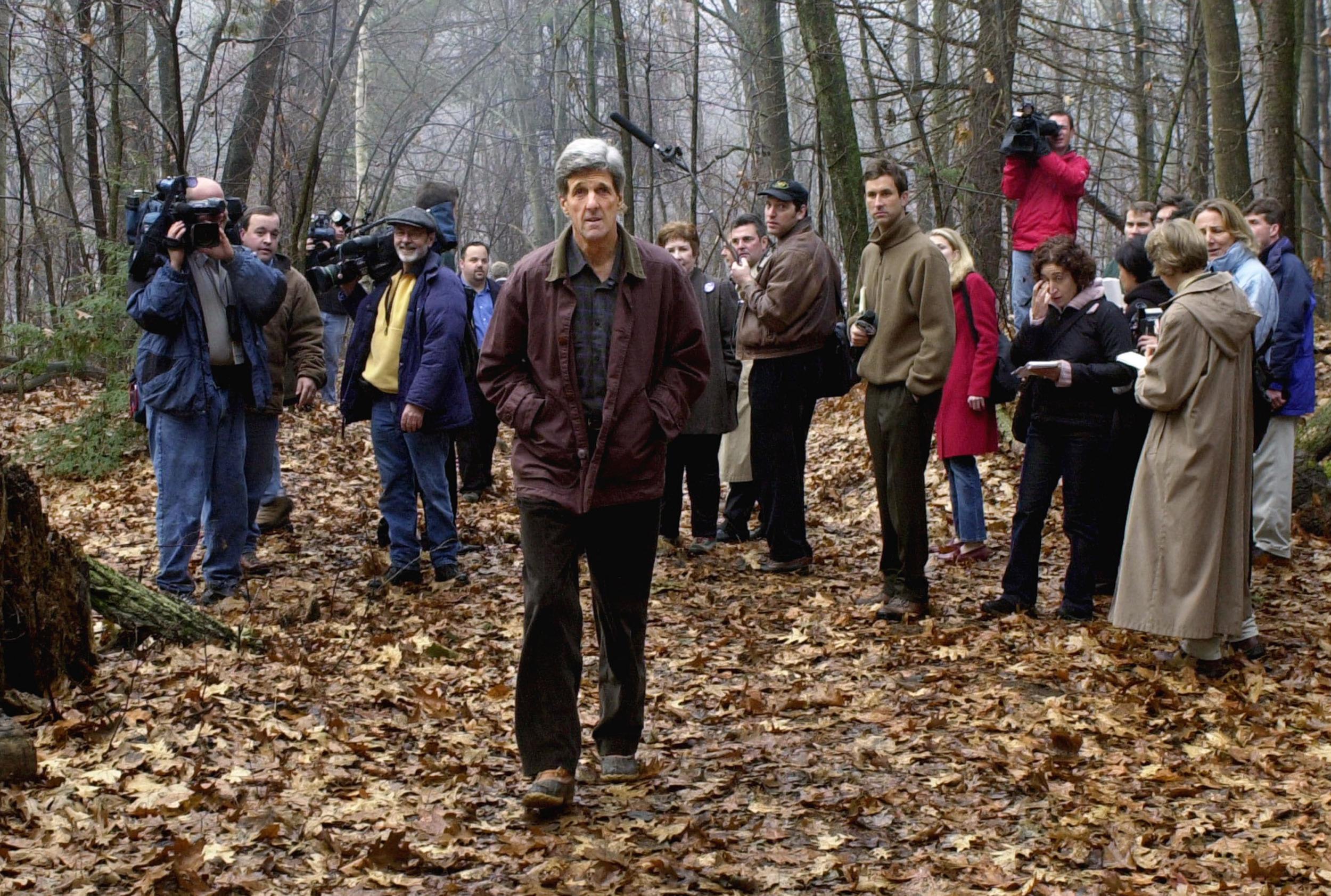
Mitt Romney and John McCain recovered from losing Iowa by winning here in 2012 and 2008, and John Kerry become the Democratic frontrunner in 2004 after winning here.
But Mr Trump has shocked commentators by polling very well in the state this year.

A more moderate candidate, like Mr Rubio, Chris Christie, or former Ohio Governor John Kasich, might beat him if there were not so many moderate candidates splitting the vote.
If you add up support for those three, Mr Bush and Ms Fiorina, the ‘moderate vote’ exceeds 40 per cent, but no one moderate candidate seems likely to win more than 15 per cent.
One of the smallest states in the US but one of the richest, New Hampshire is a prototypical state of the North-East.
But unlike other affluent north-eastern states, New Hampshire is, like Iowa, one of the most equal in the US.
The people of New Hampshire, like man across the region, are mainly descended from French and English colonialists, as well as Irish and Italian settlers.
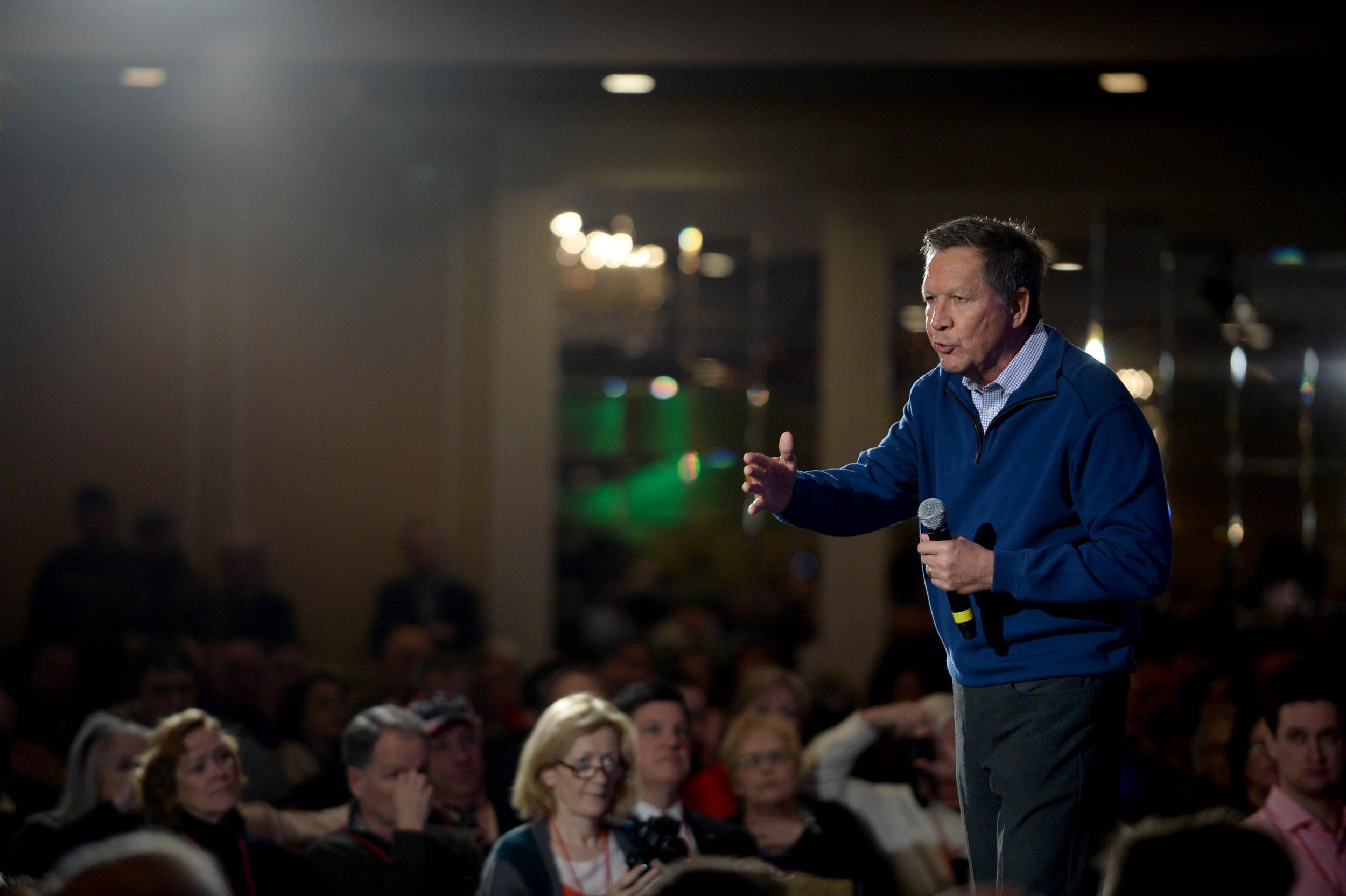
As in Iowa, the state is 90-95 per cent white and considered an American ‘heartland’; one of its towns inspired Thornton Wilder’s Our Town (1938), a classic depiction of small-town America.
It is also a swing state with a very similar voting history to Iowa. It has even fewer electoral votes (four) but they could also prove crucial in November.
Unlike Iowa, it is mountainous to the north and full of forests. Its extensive quarries led to its nickname, 'The Granite State'.
South Carolina
After New Hampshire, the Republican race will move south, skipping the nation’s capital and major cities and crossing the Mason-Dixon line into the ‘Deep South’.
South Carolina is the most southern state of the first four. Its Republican primary is on February 20.
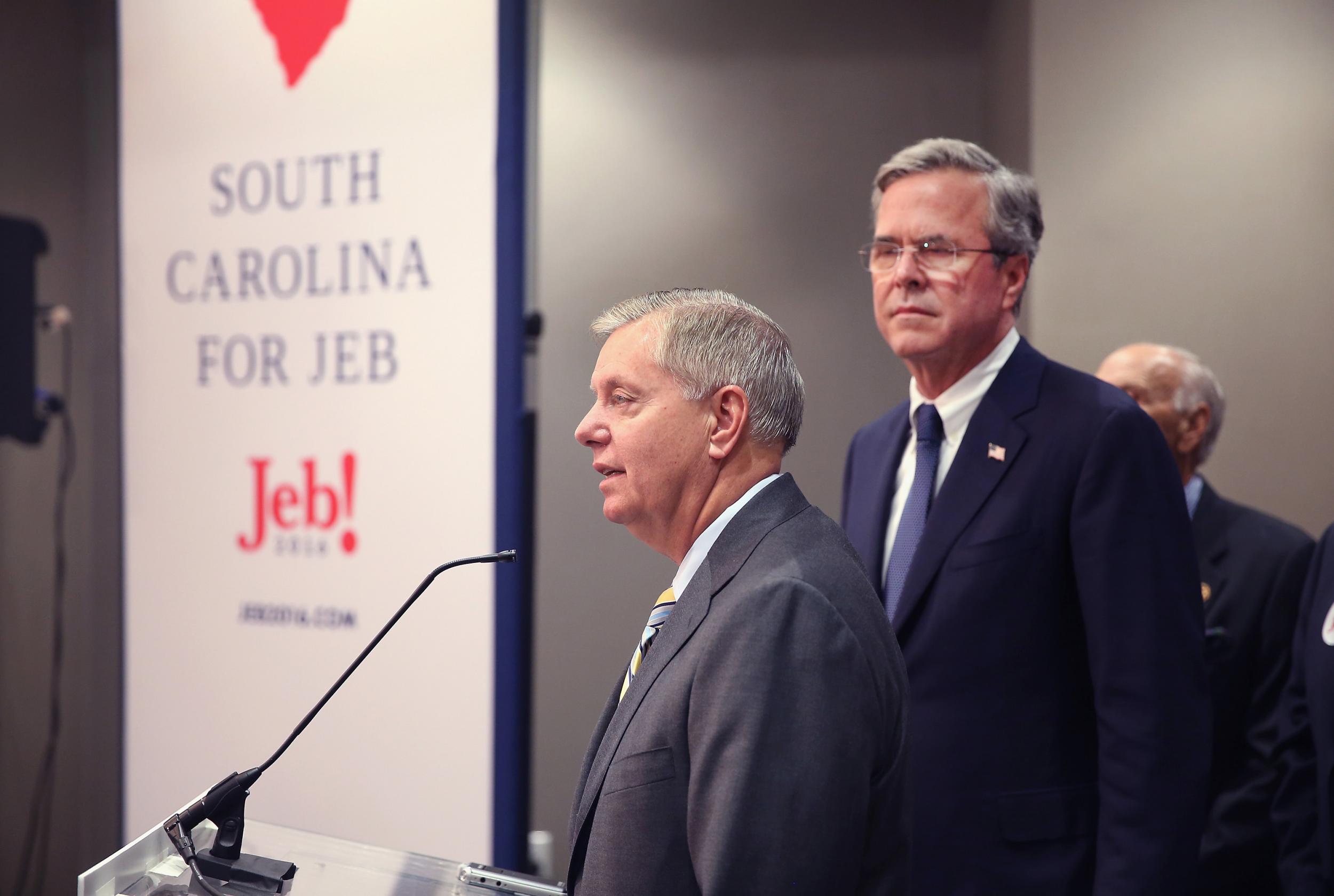
Like the rest of the region, it is divided between whites who culturally identify as ‘American’ - rather than of European descent - and African-Americans.
In June, a white racist killed nine black people in an attack on a church in the state’s capital, Charleston, which led to the Confederate flag being taken down from the State Capitol building.
It is the most populous and the poorest state of the four, in what is country's poorest region.
A quarter of voters are black and overwhelmingly vote Democrat, but South Carolina has nevertheless voted Republican in every presidential election since 1976.
Mr Cruz has been gaining in the polls here, but Mr Trump leads and would be favourite to win if has already triumphed in Iowa and New Hampshire.
Mr Sanders trails Ms Clinton by a wide margin here, but the Democrats will first fly west before South Carolina votes on February 27.
NEVADA
Nevada is the final early-voting state.
Democrats will cast their ballots here on the day of the South Carolina Republican primary on February 20, while Republicans will do so three days later.
Nevada is the representative of the American West.
After South Carolina, the Republicans will fly over ‘Middle America’ – Missouri, Kansas, Colorado – and land in Nevada, home of Las Vegas and neighbour of California.

Known by many names but perhaps best-known as the ‘Desert State’, two million of its 2.9 million people live in its southern tip. Most of the state is semi-arid.
Once dependent on silver mining and still a major gold producer, its Vegas-based economy and lax laws on sin means it is now home to 190,000 hotel rooms.
Nevada’s population has increased 18-fold since 1950 and it is one of six US states with a sizeable Hispanic population; Latinos make up one-in-five of the vote here.
Four of the other states with big Hispanic populations share a border with Mexico. The sixth is Florida. Americans of Mexican ancestry are marked by pink squares in the map below.
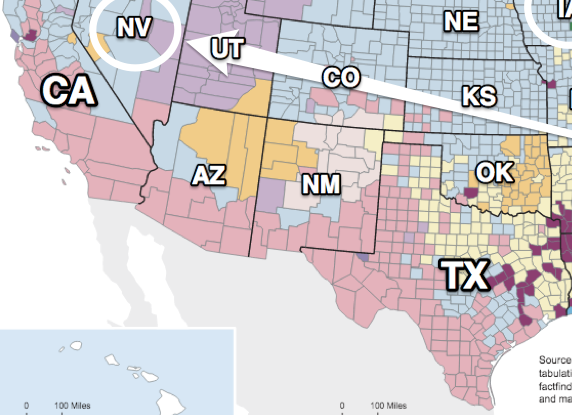
Nevada is also another of the small swing states, like Iowa and New Hampshire. Paying great attention to these states suits both parties ahead of the election in November.
Its large Hispanic population – and sizable black and Asian communities – make it the state most representative of America among the first four.
A total of 40 per cent of Nevada voters, and 30 per cent of the US electorate, is non-white.
There have been few polls in Nevada - and the race here is likely to be shaped by results in the first three states.
'Super Tuesday'
The days after the final contests in Nevada - for the Republicans - and South Carolina - for the Democrats - could be the most pivotal in the entire race.
On Tuesday March 1, exactly one month after Iowa begins the voting, more than a dozen states will vote in both the Republican and Democratic races.
The Democratic primary could be over by then if Ms Clinton is undefeated and more than a quarter of delegates will be up for grabs on the Republican side.
If Mr Trump has faired as well in the early states as polls currently suggest, he could be on his way to the nomination.
Join our commenting forum
Join thought-provoking conversations, follow other Independent readers and see their replies
Comments
Bookmark popover
Removed from bookmarks